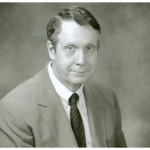New Concept of Autoimmunity
As a medical student, Dr. Paulus had been intrigued by lectures on the then–relatively new concept of autoimmunity and had taken an elective in rheumatology. That fascination took hold as he learned the basics of inflammation and immunity from Michael Whitehouse, PhD, an experimental pharmacologist Dr. Pearson had also recruited to UCLA. Dr. Pearson had developed a rat model of adjuvant arthritis, which Dr. Whitehouse had transferred by infusing animals with lymphocytes from diseased rats and then studying the effects of potential drugs on various types of induced inflammation. Dr. Paulus became interested in studying the effects of nonsteroidal antiinflammatory drugs on several types of induced inflammation in patients with RA.
Those mechanistic studies led Dr. Paulus in the early 1970s to investigate the involvement of lymphocytes in RA, systemic lupus erythematosus (SLE), dermatomyositis, and scleroderma, first in a case report of thoracic duct lymphocyte drainage (TDD) published in 1973.1 In a 1977 study, he and his coinvestigators documented significant improvement in grip strength, ring size, duration of morning stiffness, and number of tender joints in their RA study participants who underwent TDD.2 Reinfusion of unlabeled or 51Cr-labeled lymphocytes resulted in transient exacerbation of disease activity in three of the study subjects. These studies validated the hypothesis that these lymphocytes played a critical role in the chronic inflammatory disease process and helped form the basis for subsequent basic research.

